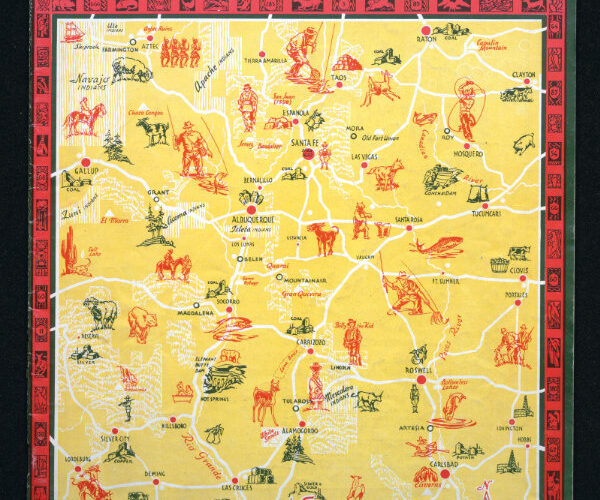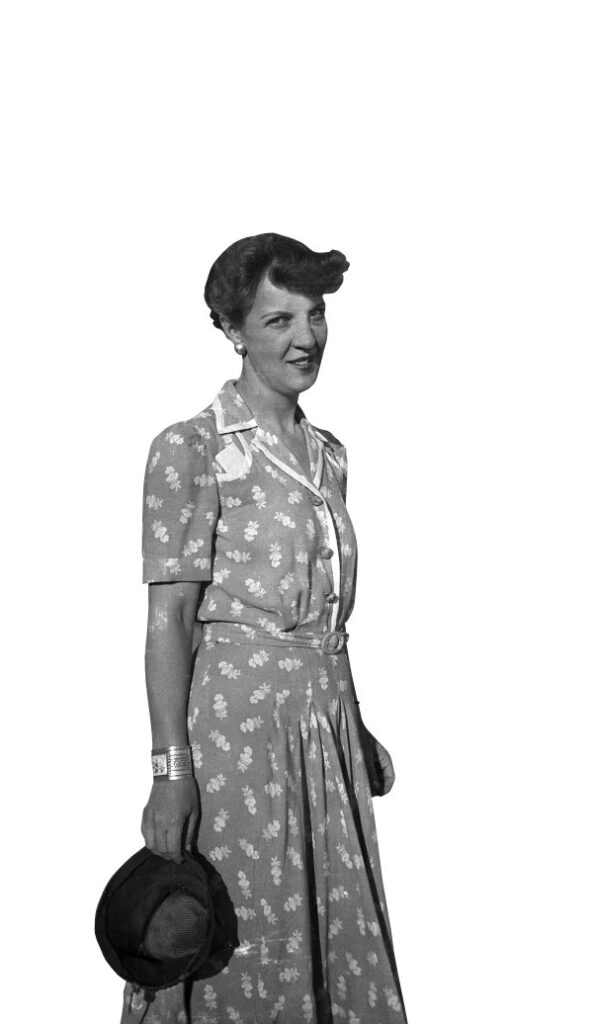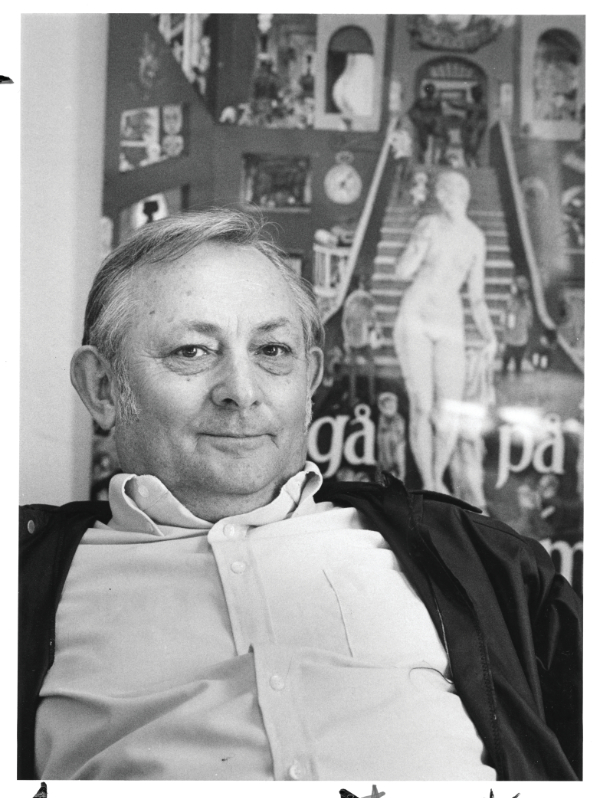The Accidental Archivist
The 100th anniversary of New Mexico Magazine has inspired an exhibition at the New Mexico History Museum, aided in part by years of sometimes inept research by a longtime journalist.
 Wilfred Stedman, a noted Santa Fe artist, created many maps
that featured on covers and on inside pages. May 1936; image courtesy
New Mexico Magazine.
Wilfred Stedman, a noted Santa Fe artist, created many maps
that featured on covers and on inside pages. May 1936; image courtesy
New Mexico Magazine.
By Kate Nelson
MY INTRODUCTION to New Mexico Magazine’s archive in 2013 elicited my inner Bette Davis. Led past a warren of offices in the basement of the Lew Wallace Building, a onetime dormitory for St. Michael’s School, I was deposited into a small, windowless room. Where heavy books encasing twelve issues from each year should have lined up on military-tight shelves, they were instead scattered around the room, some stacked on chairs, some fallen to the floor, none organized by year, much less decade. Loose copies of magazines joined the general disarray, each one at risk of disintegration through neglect.

What a dump, I thought, echoing Ms. Davis’s most famous line in the 1949 film Beyond the Forest.
I’d arrived as a freelancer working on the biography Helen Hardin: A Straight Line Curved, about the artist whose career had soared after a March-April 1970 cover story in the magazine. I wanted to see what else might have been written about her, so headed to the magazine’s office while I was on a break from my main hustle as marketing manager for the New Mexico History Museum. There, I’d grown accustomed to the deeply layered and efficiently operated archives of the Fray Angélico Chávez History Library, where qualified professionals possessed both the skills and the passion to treat every book, periodical, letter, and map with white-glove care.
My research trip produced little of value, but it planted a seed— one that turned into an unexpected thicket of thorns three years later when I joined the magazine’s staff as managing editor. Eager to learn where the magazine had been since its July 1923 founding and certain that I could discover hidden treasures—great writers, amazing photographs, brushes with history as it happened—I embarked on a self-directed sojourn aimed solely at filling my brain with knowledge of the past.
On work breaks, I would pull an old issue from the three file cabinets that were supposed to hold all of our individual issues (and where I discovered confounding gaps and too many empty file folders). Each weekend, I would lug home one of the bound issues and pore over them, struggling to see past dated typography and early photo reproduction quality for the occasional jewel—all except 1927’s bound copy, which I still haven’t found.

I learned a lot. But I also turned into a nagging librarian, with fingers bloodied by thousands of file-folder papercuts and a back strained by waves of moving the entire collection not once, not twice, but—oh, who even remembers how many times anymore. Fortunately, I had people like Paul A. Jones to keep me going.
“Shut in by narrow canyon walls, it is a place of almost complete quiet,” he wrote of Chaco Canyon in January 1932. “Rambling through the ruins, one’s imagination, stifled for years, begins to manifest itself. He can feel if not see the spirits of thousands of busy people about him, softly slipping into the scores of doors and over terraced flat roofs. He stands and dreams in the silence of death to be startled and jump nervously when a cottontail leaps from behind a rock and scuttles away through the dry sage brush.”
I felt like I was standing in wonder with him. Then I rode shotgun with author Conrad Richter (March 1957) as he drove across the state’s eastern plains, a trip that inspired him to write Sea of Grass, one of my favorite novels. Archaeologist Florence Hawley Ellis amazed with her account of a newfangled technology called tree-ring dating (June 1936). Ina Sizer Cassidy introduced me to the artists who were enlivening Santa Fe (every month, 1931–1960). Tony Hillerman showed me around the University of New Mexico’s Albuquerque campus (February 1964). Rudolfo Anaya invited me to a Christmas celebration in Puerta de Luna (December 1982).
There were other, less salubrious accounts, ones that referred to Indigenous people with language now regarded as inappropriate, or regarded Hispanic villages as places to, essentially, gawk at “quaint” lives. Still, within the collective voice of the magazine’s many incarnations, my inner type A problem-solver heard an adamant call: Organize this chaos!
ENCHANTORAMA! 100 Years of New Mexico Magazine, an exhibition at the New Mexico History Museum on view through February 14, 2024, revels in the story of how the nation’s oldest state-owned magazine played key roles in the development of roads and bridges all across the llano, the birth of the tourism industry, the celebration of the state’s art, history, culture, and recreation, and still-evolving efforts to provide respectful representation of all New Mexicans in more ways than the former once-a-year focus on Indigenous communities or Hispanic fiestas.

Formed as the New Mexico Highway Journal in July 1923, its first issue, all fifteen pages of it, introduced the staff of the New Mexico Highway Department, provided a convoluted explanation of federal funding, and wrung its hands over “by all odds our greatest problem”: the maintenance of gravel roads. On the cover: A 3-by-5-inch black-and-white photo of an indistinguishable locale, captioned “Federal Aid Project No. 20-A, Lincoln County.”
Who was the intended audience? According to a small notice inside: “This publication will be sent free upon request to state and county officials, exchanges, newspapers, libraries, schools, clubs, chambers of commerce, contractors, hotels, garages, or to any persons interested in the improvement of highways in the state and in the operation of the Department.”
(If my predecessors had ever held onto a copy of this issue, free or otherwise, they later let it slip away. Our only survivor is in one of the year-end books we still dutifully produce, though the combined Vol. I–II bears a frighteningly diminished binding.)
A second issue had to wait until October 1923, and its twenty- two pages contained what could be seen as the first attempt at encouraging readers to use those new roads to get out and see something. Erna Fergusson, founder of the Koshare Tours that the Fred Harvey Company would later take over and rename Indian Detours, wrote about visiting Acoma Pueblo. In it, she lamented the kind of tourist whom Pueblo people could rightly view as “crude invaders from another civilization who regard an Indian village as they might a zoo.”
Two more 1923 issues followed, and in 1924, the magazine began publishing monthly, with more tourism-related stories appearing, including several on Carlsbad Caverns. That site was then accessible only by a dubious dirt road and getting into the caverns themselves required an even more dubious trip in a large bucket.


In July 1931, the Highway Department merged its publica- tion with the state Game and Fish Department’s. The masthead changed to simply New Mexico, and a monthly smattering of hunting and fishing articles joined those of art, historic churches, and the building of diversion dams and installation of culverts.
During those Depression years, I marveled at how many times the magazine re-ran covers, possibly as a cost-saving move or simply because the most-repeated ones were that lovely: Tom Lea’s Winter in New Mexico painting of two cowboys appeared four times; Gerald Cassidy’s The Navajo Shepherdess and Her Flock painting reached readers seven times.

I wish I could say I had noted all these details during my early explorations of the archive, as a proper archivist would have. Instead, I relegated them to my increasingly faulty memory. This closer look by me and Molly Boyle (then senior editor, now managing editor) took root when we as a staff began thinking about how to commemorate our 100th anniversary. For creating a precise accounting of how the magazine changed over time, Molly and I dreamed big. Too big.
For the period of 1923 to 1988, the magazine had at its disposal a print-only index that dutifully notes authors and subjects and that has long aided our searches for particular articles. Post-1988, a random cast of magazine staffers kept similar track, but used a variety of methods—Word Docs and Excel sheets—while employing differing levels of attentiveness. The bottom line: We have indexes that don’t always track what they purport to be tracking. Worse? They never considered the importance of noting the first tourism-related advertisement (May 1924), or the first Hispanic or Indigenous writer (December 1932 and February 1933, respectively), or the launch of an editorial campaign against billboards (August 1929).
Molly and I intended to do just that. While also tending to our regular duties, we began inputting details that previous record-keepers had skipped. We tracked the editorship from R.W. Bennett, deployed from his Highway Department duties as an engineer, to the 1935 ascendancy of George Fitzgerald, who steered the magazine’s shift into a travel publication. We described what was on the covers. We pinpointed each illustrated map created by Wilfred Stedman, a noted Santa Fe artist who helped lay out each issue in the Fitzgerald era. We noted changes in subscription rates. We even had a category called “cringe,” where we pointed out how the mores of an earlier era curdled during ours.

We got as far as 1940 before crying uncle, requesting reinforce- ments, and learning that the magazine, which relies solely on advertisements, subscriptions, and newsstand sales for its budget, lacked the money to deliver any help.
The Excel document has gathered digital dust since then. Sometimes, it teases me with thoughts of how its completion could fuel a master’s thesis or even a doctoral dissertation. If interested, inquire here.
THE ARCHIVAL COLLECTION has fewer gaps these days. I credit all the nagging that led colleagues to excavate loose copies from the teetering stacks on their desks and to relinquish the bound copies they had used to elevate their computers. When a librarian for the University of New Mexico’s Taos campus told me she needed to get rid of several decades’ worth of issues, we worked out a plan to deliver them to our office. That alone filled several dozen holes in the file folders.
Those individual copies that were once crammed into three file cabinets to the point of immobility now have more elbow room, thanks in part to a fourth cabinet in the office’s copy room, which saw me spending several evenings and one weekend hauling piles of folders from one room to the other. I even sated my desires for neatness by using a labeler to replace nine decades of handwritten scrawls on folders and cabinets.
The holes that remain bug the heck out of me—especially as I head into a retirement that, by state rules, requires me to sit out involvement with the magazine for a year. The bound copies are in the front portion of our office while the file cabinets are in the back, divided into two rooms. Connecting the rooms is a dark corridor where yet another set of shelves holds duplicate copies of issues that I never got around to organizing. We keep them in hopes of making readers’ dreams come true when they request— as they often do—one old issue or another that held a story of a beloved grandfather.
The Excel document stops abruptly, we still lack an online index, and we never pulled together the wherewithal to digitize every issue—goals that I hope a future staffer will embrace. What might help them is the way in which those bound issues now line up in the magazine’s lobby. About half of them look sharp in their chocolate-brown covers with shiny gold lettering on the spines. The earlier eras feature a less-uniform mix of beige, green, blue, and maroon covers, some with spines so beat up that pages slink to the floor any time you open them.
Perhaps that someday-staffer will stand before them and note only the ragtag spines and the oddball way that some books sometimes stand tall while others lean. It’s no dump, but to their ears, it still could scream more flaw than order. To them I say, nay, because now they’re arranged chronologically. Journey of a thousand steps, baby.
—
The New Mexico Magazine archives at the New Mexico History Museum’s Fray Angélico Chávez History Library are complete and can be made available to researchers and members of the public by appointment. The magazine can also make arrangements for people to peruse its archives in their office, but the staff readily bows to the skills of the History Library’s researchers in actually finding what someone is seeking.
Kate Nelson is a longtime New Mexico journalist who recently retired as managing editor of New Mexico Magazine —partly so she could explore the state without having to carry a reporter’s notebook.
